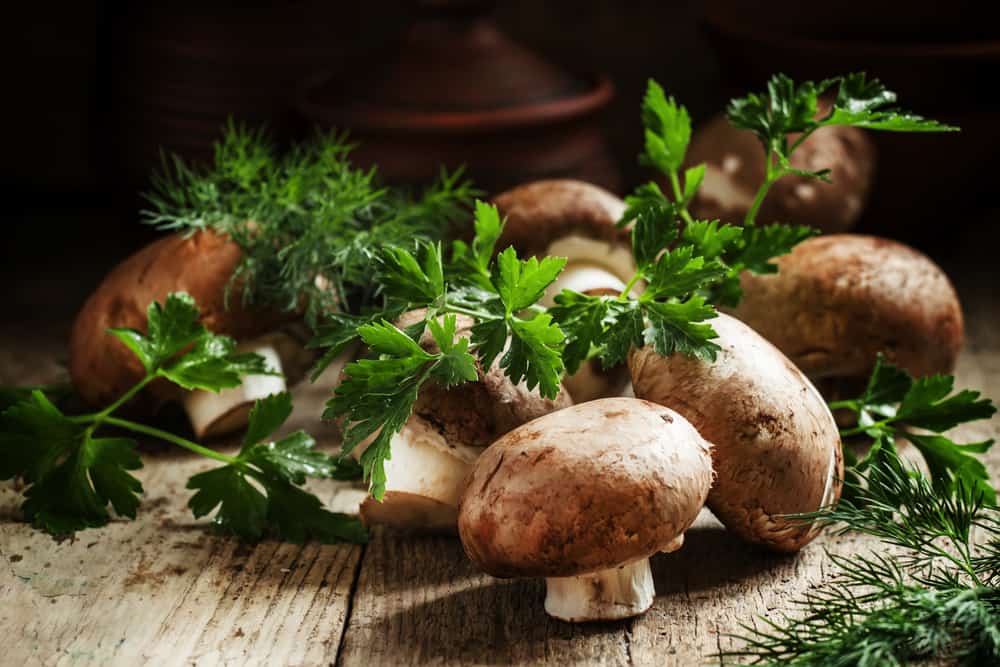Table of Contents
For many, there is no better meat alternative than mushrooms. They’re cooked as the staple in countless mouthwatering recipes. Some of these could easily fool even the pickiest carnivores!
Their flavors, textures, and aromas provide the same protein-rich satisfaction as different meats. Some prized mushrooms even taste like seafood!
There are HUNDREDS of edible mushroom species
Before we get into the nitty-gritty of why mushrooms are like meat let’s clarify one thing. There is an immense diversity of wild edible mushrooms! Most have only tried a few types of mushrooms, but there are hundreds of different varieties! Their flavors range in comparison from lobster, to chicken, even maple syrup and almond extract!
If you say you don’t like mushrooms, it’s because you haven’t tried the right one! Some you’ve never heard about carrying the name of specific meats they resemble!
Mushrooms named after Types of Meat
- Chicken Of The Woods
- Hen Of The Woods
- Lobster Mushrooms
- Shrimp Russulas
- Fried Chicken Mushroom
- Beefsteak Mushroom
- Pigs Ears
- Shrimp Of The Woods
- Oyster Mushrooms
Mushrooms are a Vegan Meat Alternative
Mushrooms have a biochemical composition that resembles different types of meat. Genetically, mushrooms are more closely related to animals than plants! This is because mushrooms share a more recent common ancestor with us than they do with plants. Once cooked and eaten, two main factors stimulate this meat-like sensation.
- Flavor: Their biochemical composition and how it reacts to our taste buds.
- Texture: Their physical structure and feelings within our mouths during chewing and swallowing.
Resemblance in Flavors
The resemblance in flavor to meat relates to the presence of similar constituents. In particular, the non-essential amino acids glutamic and aspartic acids. These give mushrooms the dark and meaty flavor known as Umami. Umami flavors occur in meat, mushrooms, and different fermented foods. Other examples include caramelized onions, soy sauce, BBQ sauce, miso, and nutritional yeast.
The flavor enhances even more through the process of caramelization. This “caramelization” is due to a chemical transformation known as the mallard reaction. This reaction restructures the sugars and amino acids in a way to enhances the umami flavor.
Resemblance in Texture
The texture of mushrooms is often described as chewy, juicy, rubbery, and even firm. Some describe it as “meaty”. This is due to the high quantities of moisture and proteins. This gives mushrooms a satisfying meat-like texture. Mushrooms are also low in carbohydrates and fibers that are present in vegetables. Certain varieties of mushrooms even shred into pieces like chicken or beef. While some describe mushrooms as “slimy” this texture doesn’t occur with proper cooking.
Mushrooms are versatile in the Kitchen
Mushrooms are already mega-diverse, and in the kitchen their possibilities are endless. The chef has ultimate control of transforming raw mushrooms into splendid masterpieces. If you don’t like mushrooms, it’s not just that you haven’t tried the right variety of mushrooms. You probably haven’t had it cooked in a way you enjoy!
A talented chef can either emphasize the rich mushroom flavor or disguise it. For this reason, there are dozens of recipes that disguise mushrooms as meat!!
Common Recipes that replace Meat with Mushrooms
- Portabello Burgers
- Lion’s Mane Crab Cakes
- BBQ Pulled Chicken of the Woods
- Cream of Lobster Mushroom Soup
- Oyster “Chicken” Nuggets
- Mushroom Wellington
- Mushroom Meatballs
- Mushroom “Beef” Stroganoff


I have high cholesterol and I love mushrooms. They are meaty and are a good substitute for the meat I crave. I buy Portobella mushrooms and cook them with a little butter and cheese, and they taste just like a delicious steak.